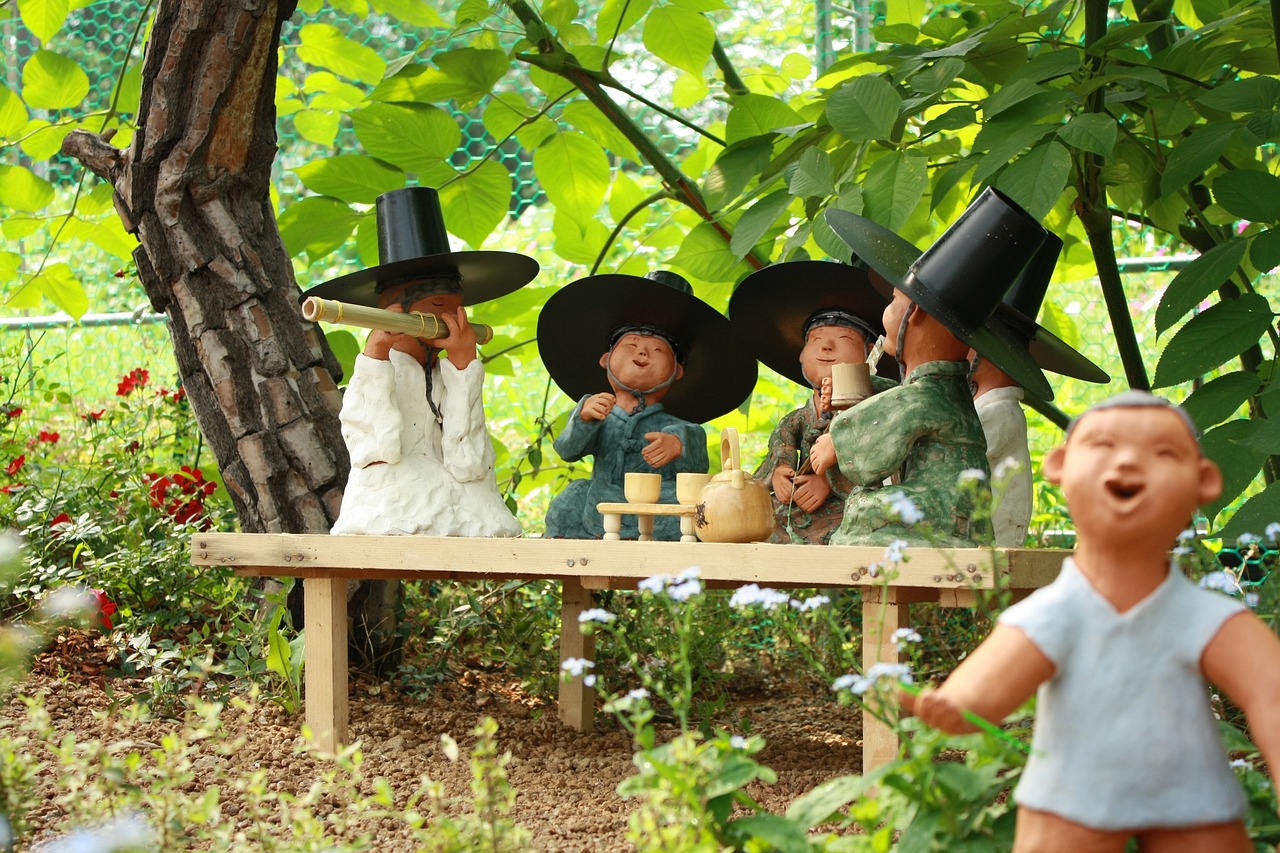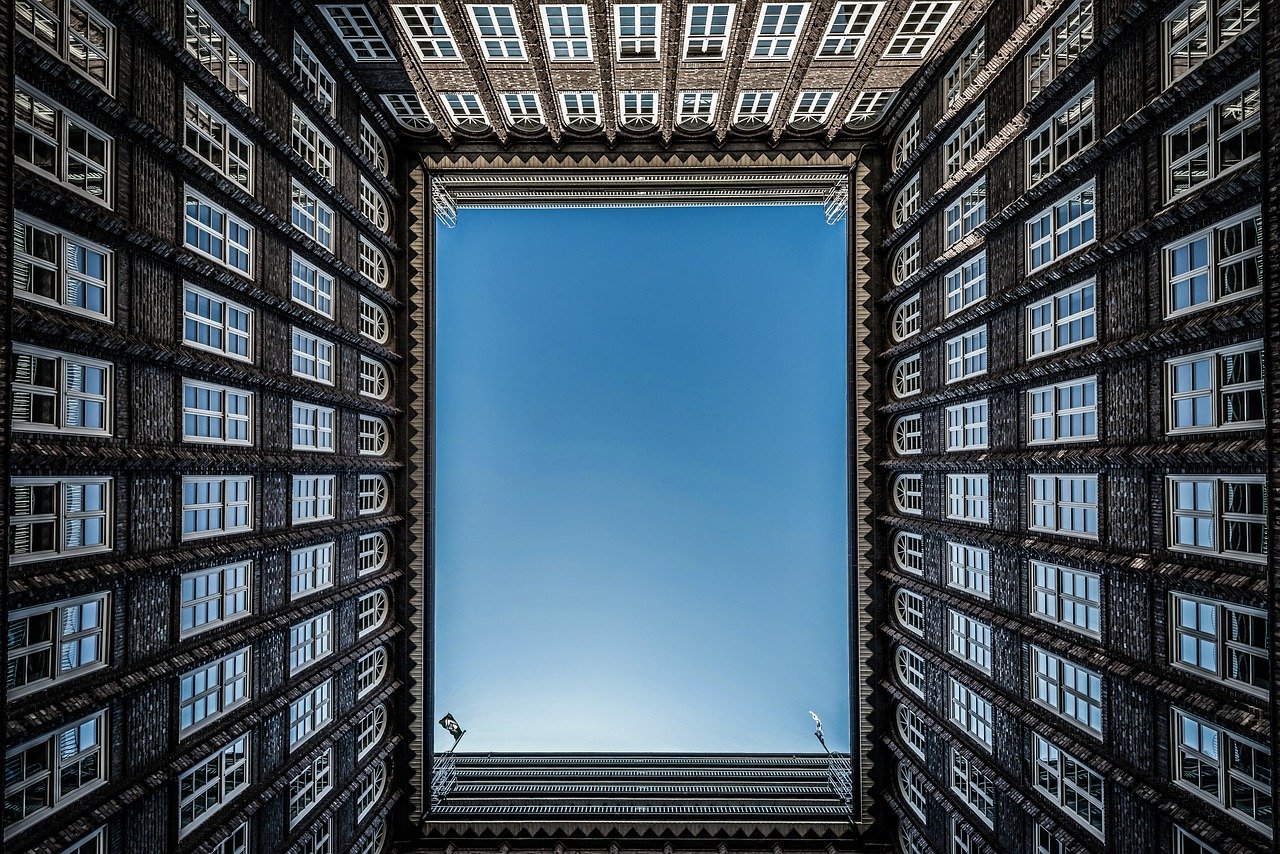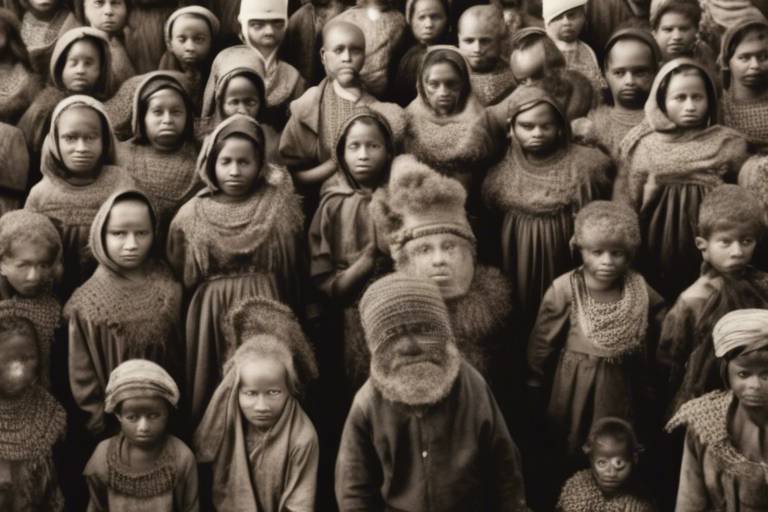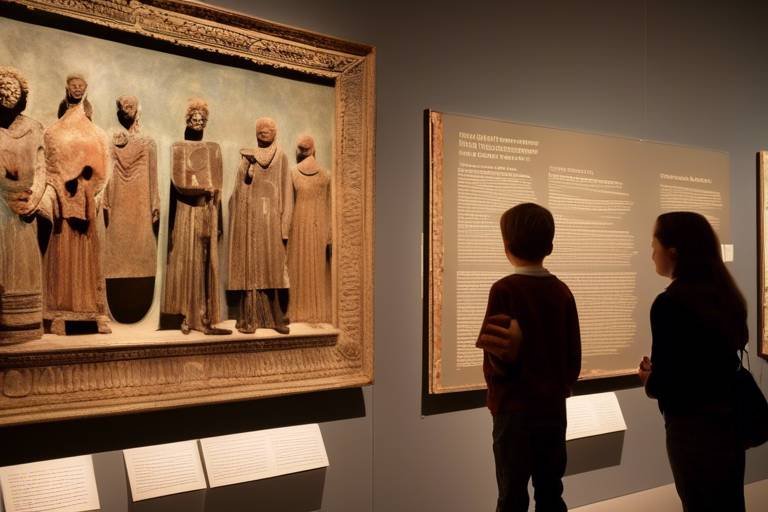The Role of Cultural Heritage in Shaping National Identity
Cultural heritage plays a vital role in shaping the national identity of a country, serving as a reflection of its history, values, and traditions. By preserving cultural artifacts, traditions, and historical sites, a nation can maintain a strong sense of identity and pass down its rich heritage to future generations. The unique customs, practices, and artistic expressions of a culture contribute to its collective identity, fostering a sense of belonging and pride among its people.
Historical sites hold immense significance in representing a nation's past and cultural identity. These landmarks serve as physical reminders of the events and individuals that have shaped the country's history. By safeguarding these sites, we ensure that the stories and achievements of our ancestors are not forgotten, preserving a connection to our roots and heritage.
Traditional customs and practices are integral to the fabric of a nation's identity, embodying the values and beliefs that have been passed down through generations. Whether it be ceremonies, rituals, or celebrations, these traditions serve as a link to the past and a guide for the future, shaping the cultural identity of a society.
Language and literature are powerful tools in preserving cultural heritage, serving as mediums through which stories, myths, and knowledge are transmitted. The words we speak and the stories we tell reflect our cultural identity, capturing the essence of a nation's heritage and preserving its unique identity for posterity.
Art and architecture are visual representations of a nation's cultural identity, showcasing the creativity and ingenuity of its people. From intricate paintings to grand monuments, artistic expressions convey symbolic meanings that connect individuals to their cultural roots, fostering a sense of pride and belonging.
Music and dance play a significant role in preserving cultural traditions and fostering unity among diverse communities. Through rhythmic beats and expressive movements, music and dance celebrate the diversity of a nation, bringing people together in joyous harmony and showcasing the richness of its cultural heritage.
Despite the importance of cultural heritage, preserving it faces numerous challenges in the modern world. Urbanization, globalization, and natural disasters pose threats to historical sites and traditions, endangering the very essence of a nation's identity. It is crucial to address these challenges and work towards safeguarding our cultural heritage for the benefit of present and future generations.

Preservation of Historical Sites
Preservation of historical sites is paramount in safeguarding a nation's cultural heritage and ensuring that future generations can connect with their past. These sites serve as tangible links to history, allowing us to walk in the footsteps of our ancestors and experience the events that shaped our identity. By maintaining historical landmarks and buildings, we preserve the stories and memories that define who we are as a nation.
Historical sites not only hold historical significance but also contribute to the aesthetic and architectural richness of a country. They are living testaments to the craftsmanship and ingenuity of past civilizations, showcasing their artistry and technological advancements. Through the preservation of these sites, we honor the legacy of our forefathers and showcase our cultural heritage to the world.
Furthermore, historical sites play a crucial role in educating future generations about their roots and instilling a sense of pride in their heritage. By visiting these sites, individuals can gain a deeper understanding of their cultural identity and appreciate the traditions that have been passed down through the ages. Preserving historical sites is a way of paying homage to our ancestors and ensuring that their legacy continues to inspire and educate us.

Traditional Customs and Practices
Traditional customs and practices hold a significant place in shaping the identity of a nation, acting as threads that weave together the fabric of its cultural heritage. These age-old traditions are like time capsules, carrying the essence of generations past and offering insights into the values and beliefs that have guided a society through the ages.
One of the most striking aspects of traditional customs is their ability to transcend time and space, connecting individuals to their roots and fostering a sense of belonging. Whether it's the elaborate ceremonies of a wedding, the colorful festivals celebrating harvests, or the solemn rituals honoring ancestors, these practices serve as markers of identity, distinguishing one culture from another.
Moreover, traditional customs often serve as a means of communication, conveying messages of respect, unity, and community solidarity. Through shared practices like storytelling, dance, and communal gatherings, a sense of collective identity is reinforced, strengthening the bonds that tie individuals together.
Language and folklore play a crucial role in preserving these customs, acting as vessels through which traditions are passed down from one generation to the next. The oral traditions of myths, legends, and proverbs serve not only as entertainment but also as educational tools, imparting moral lessons and cultural values.
Furthermore, traditional practices are not static but dynamic, evolving with the times while retaining their core essence. As societies adapt to changing circumstances, customs may take on new meanings or forms, reflecting the resilience and adaptability of a culture in the face of modern challenges.
In essence, traditional customs and practices are the soul of a nation, embodying its history, values, and aspirations. Preserving these cultural treasures is not merely an act of conservation but a commitment to safeguarding the identity and heritage of a people for generations to come.

Impact of Language and Literature
Exploring how cultural heritage influences the formation of a nation's identity and the importance of preserving traditions, artifacts, and historical sites for future generations.
Discussing the significance of maintaining historical landmarks and buildings that symbolize a nation's past and contribute to its cultural identity.
Analyzing how traditional customs, rituals, and practices are passed down through generations, shaping the collective identity of a nation.
Language and literature are the threads that weave together the tapestry of a nation's cultural heritage. Through the words penned by authors and poets, and the stories passed down through generations, a nation's values and beliefs are immortalized. Just like a well-crafted novel that stands the test of time, language and literature play a crucial role in preserving the essence of a culture. They serve as a mirror reflecting the soul of a nation, capturing the intricacies of its history and the richness of its traditions.
Examining the influence of art and architecture in reflecting a nation's cultural identity and serving as a visual representation of its heritage.
Discussing how artistic expressions, such as paintings, sculptures, and crafts, carry symbolic meanings that connect individuals to their cultural roots.
Exploring how architectural styles and designs reflect the history, values, and traditions of a nation, contributing to its unique identity.
Highlighting the role of music and dance in preserving cultural traditions, fostering a sense of unity, and celebrating the diversity within a nation.
Addressing the obstacles and threats faced in safeguarding cultural heritage, including urbanization, globalization, and natural disasters.
Q: Why is cultural heritage important for a nation?
A: Cultural heritage is crucial for a nation as it preserves the history, traditions, and values that define its identity, fostering a sense of belonging and continuity.
Q: How can individuals contribute to the preservation of cultural heritage?
A: Individuals can contribute by respecting and promoting cultural traditions, visiting historical sites, supporting cultural institutions, and advocating for heritage conservation.

Art and Architecture
When delving into the realm of , one cannot help but be mesmerized by the profound impact these creative expressions have on shaping a nation's cultural identity. Art, in its various forms, serves as a visual narrative of a society's values, beliefs, and historical journey. From intricate paintings to majestic sculptures, each piece carries with it a story that connects individuals to their cultural roots. The symbolism embedded in these artistic creations transcends time, serving as a bridge between the past and the present.
Similarly, architecture stands as a testament to a nation's heritage, reflecting its history, traditions, and societal norms. Architectural styles and designs speak volumes about the evolution of a civilization, showcasing the ingenuity and craftsmanship of its people. Whether it be the towering spires of a cathedral, the intricate patterns of a mosque, or the minimalist lines of a modern skyscraper, each architectural marvel tells a unique tale of the culture it represents.
Through art and architecture, individuals can immerse themselves in the rich tapestry of a nation's past, gaining insights into its collective identity and values. These creative expressions not only serve as aesthetic delights but also as powerful conduits of cultural preservation, ensuring that the legacy of a civilization endures for generations to come.

Symbolism in Art
Art has always been a powerful medium for conveying messages beyond the surface, delving into the depths of culture and identity. Symbolism in art serves as a bridge between the tangible and intangible aspects of a nation's heritage, encapsulating profound meanings within visual representations. From ancient cave paintings to contemporary masterpieces, artists have utilized symbols to communicate stories, beliefs, and values that resonate with their cultural roots.

Architectural Styles
Architectural styles are more than just structures; they are living embodiments of a nation's history and cultural identity. Each architectural design tells a unique story, reflecting the values, beliefs, and traditions of the people who built it. From the grandeur of Gothic cathedrals to the minimalism of modern skyscrapers, architectural styles serve as a visual timeline of a nation's evolution.
Take, for example, the intricate designs of Islamic architecture, with its geometric patterns and ornate calligraphy, showcasing the artistic brilliance of a civilization. These architectural marvels not only serve practical purposes but also convey deep symbolic meanings, connecting individuals to their cultural roots and heritage.
Furthermore, the fusion of different architectural styles in a single building or cityscape can symbolize the diversity and inclusivity of a nation. The juxtaposition of ancient and contemporary architecture in urban settings reflects the dynamic nature of culture and the constant interplay between tradition and innovation.
Architectural styles also play a crucial role in shaping the aesthetic identity of a nation. The choice of materials, colors, and forms in architecture can evoke emotions, provoke thoughts, and create a sense of belonging among the populace. Whether it's the grand palaces of Europe or the intricate pagodas of Asia, architectural styles leave a lasting impression on both locals and visitors alike.

Music and Dance
Music and dance are integral components of a nation's cultural heritage, serving as vibrant expressions of traditions, emotions, and values. Through rhythmic movements and melodic tunes, music and dance have the power to transcend language barriers and connect individuals on a profound level. In many cultures, traditional dances are not just performances but rituals that commemorate significant events or seasons, uniting communities in shared experiences.
Furthermore, music acts as a universal language that conveys emotions and stories, preserving the essence of a culture through lyrics and melodies. Whether it's the rhythmic beats of drums in African tribal dances or the graceful movements of classical ballet in European traditions, each form of music and dance reflects the unique identity of a nation and its people.
Moreover, the evolution of music and dance over time showcases the fusion of different cultural influences, demonstrating how traditions adapt and thrive in a dynamic world. From folk songs passed down through generations to modern interpretations of traditional dances, the resilience of music and dance in preserving cultural heritage is truly remarkable.

Challenges in Cultural Heritage Preservation
Preserving cultural heritage is crucial for maintaining a nation's identity and passing down traditions to future generations. However, this task comes with numerous challenges that threaten the integrity of historical sites, artifacts, and customs.
One of the major challenges in cultural heritage preservation is urbanization. As cities expand and modernize, historical landmarks and buildings often face the risk of demolition or neglect. Balancing development with the need to protect cultural heritage sites is a delicate task that requires careful planning and collaboration between various stakeholders.
Globalization also poses a threat to cultural heritage as it can lead to the homogenization of traditions and practices. The influx of foreign influences and the rise of mass-produced goods can erode unique cultural identities and diminish the value placed on traditional customs.
Natural disasters present another significant challenge to preserving cultural heritage. Earthquakes, floods, fires, and other catastrophic events can cause irreparable damage to historical sites and artifacts, putting centuries-old treasures at risk of being lost forever. Implementing effective disaster preparedness and response plans is essential to safeguarding cultural heritage in the face of such threats.
Furthermore, the lack of funding and resources dedicated to cultural heritage preservation can hinder efforts to protect and maintain important historical sites. Without adequate support, conservation projects may struggle to address the ongoing maintenance needs of aging structures and artifacts, leaving them vulnerable to decay and deterioration.
In conclusion, while the task of preserving cultural heritage is vital for upholding a nation's identity and heritage, it is not without its challenges. Addressing issues such as urbanization, globalization, natural disasters, and funding shortages requires a concerted effort from governments, organizations, and communities to ensure that the rich tapestry of our cultural heritage remains intact for future generations to appreciate and learn from.
Frequently Asked Questions
- What is cultural heritage?
Cultural heritage encompasses the traditions, customs, artifacts, and values that are passed down through generations, shaping the identity of a community or nation.
- Why is the preservation of historical sites important?
Preserving historical sites is crucial as they serve as tangible links to the past, allowing us to learn from history, understand our roots, and appreciate the achievements of previous generations.
- How do traditional customs contribute to national identity?
Traditional customs and practices reflect the values, beliefs, and identity of a community, fostering a sense of belonging and continuity with the past.
- What role does language play in cultural heritage?
Language is a key component of cultural heritage as it carries the collective wisdom, stories, and traditions of a community, serving as a vehicle for preserving and transmitting cultural knowledge.
- How does art influence national identity?
Art and architecture are powerful tools for expressing cultural identity, reflecting the unique history, values, and aspirations of a nation, and fostering a sense of pride and belonging among its people.
- What are the challenges in preserving cultural heritage?
Urbanization, globalization, natural disasters, and lack of awareness are some of the challenges that threaten the preservation of cultural heritage, highlighting the need for proactive conservation efforts.



















